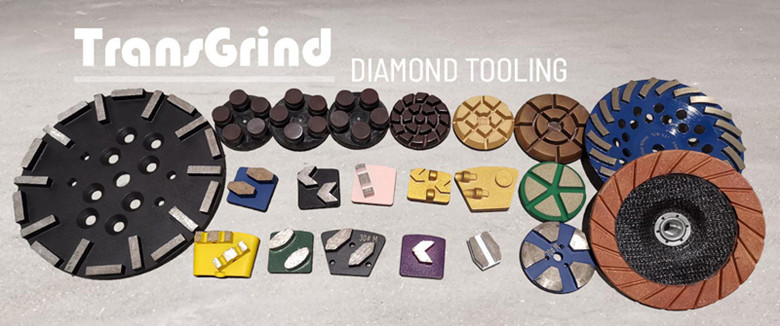Metal bonded diamond tools with self-pressure capability are widely used for machining non-ferrous materials. Typical bonding substrates for such tools include various compositions based on Cu, Co or Fe. Hot pressed metal bonded diamond tools typically have the disadvantage that the bond strength between the diamond grinding disc and the substrate is low due to the different nature of the bond. The lower bond strength can cause diamond abrasives to be pulled out during use and the diamond utilization can be as low as 10%. On the other hand, the self-pressure capability of a diamond tool determines not only the efficiency of the process, but also the surface characteristics of the machined part. In fact, the lack of self-pressure ability usually causes larger cutting forces, which inevitably introduces the probability of workpiece cracking during machining.
Among the commonly used reactive metals, Ti added to copper-based alloys can form a transient TiC layer between the bonded substrate and the diamond abrasive at temperatures as low as 900°C. Leaving this interfacial layer, various intermetallic compounds precipitate in the bond matrix, which further alleviates interfacial stresses associated with mismatched coefficients of thermal expansion and phase changes during cooling. It was believed that the retention of diamond particles could be enhanced when active metals were added to the bond matrix. However, such a belief has only been demonstrated in brazing practice, where a liquid phase was formed and the interfacial bonding was improved due to the higher reaction rate. So far, there are no reports on hot pressing diamond tools, where the hot pressing temperature is so low and the time so short that no significant liquid phase can be formed during the hot pressing process. Therefore, the interfacial reaction between the active element and the diamond particles may be limited and the interfacial bond strength can only be improved to a limited extent.

In order to achieve high bond strength between the bond matrix and the diamond grains without causing degradation of the diamond grains, the composition of the bond matrix must be designed in such a way that low hot pressing temperatures can be applied and the absence of elements in the bond matrix that catalyze degradation, such as Fe, Co and Ni, can form interfacial transient layers that can tailor the relative abundance of the strong and brittle bond matrix, leading to self-pressure capabilities. In this study, three different copper-based alloys were used as binding substrates, including Cu, Cu-15Sn and Cu-15Sn-10Ti (wt%), and the diamond particle size was varied to compare their effects on the machining performance of metal-bound diamond tools on alumina.
The performance of a diamond tooling is partially reflected in its vibration spectrum during use. Vibration associated with the machine can be similar to the vibration of body motion being generated by a rotating tool, while pressure wave vibration is generated by the mechanical feed rate, suggesting that the motor in the machine can cause background vibration. For example, if a power supply with a voltage of 380 V and a frequency of 60 Hz is used, background vibrations of 60 Hz and its integer multiples, such as 120 Hz, 180 Hz, etc., will be induced. In addition, if a power supply frequency of 60 Hz is used and the spindle is running at 2000 rpm, a natural background frequency of 33 Hz and its integer multiples, such as 66 Hz, 99 Hz, etc., will be induced. These two different sources of background vibration frequencies will be amplified during the machining process, which translates into a structural resonance vibration spectrum. The intensity of vibration caused by spindle unbalance, motor bearing vibration and structural resonance in units of gravitational acceleration can be recorded during machining along with the spindle unbalance speed, motor operating frequency and structural resonance of the mechanical bearing. This provides an effective means of proving the performance of diamond tools during use.